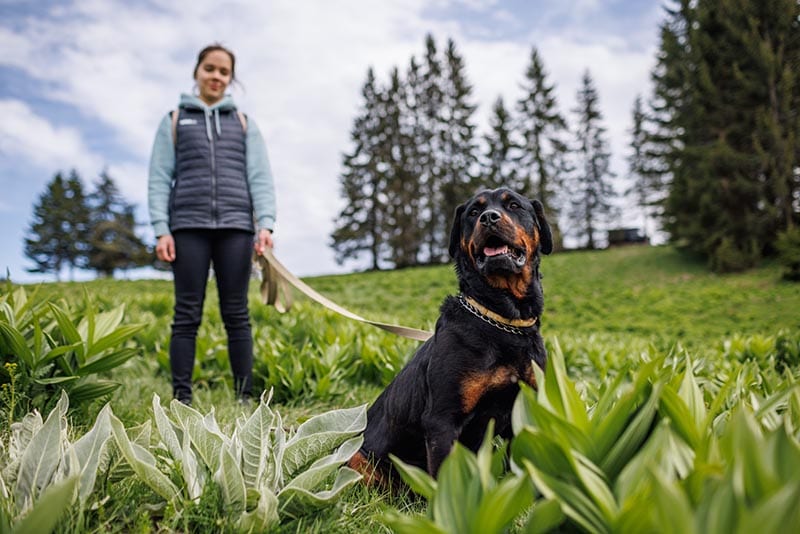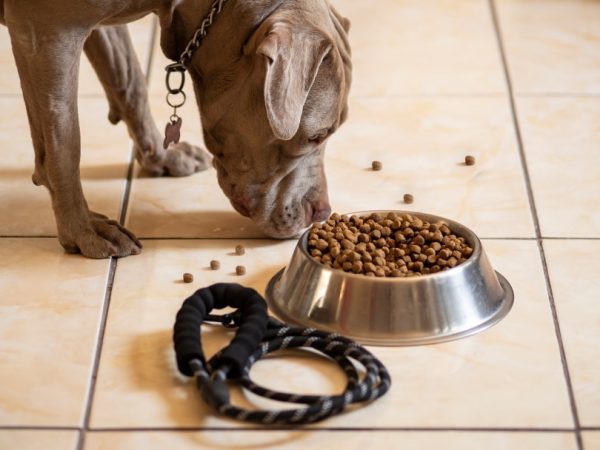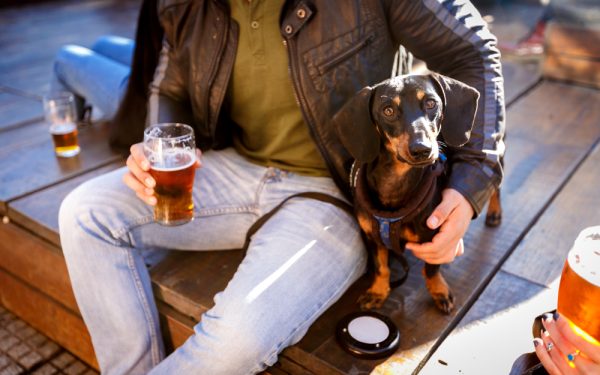Walking provides your canines with the physical and mental activity they need to stay healthy, happy, active, and alert. Dogs love being walked, that’s why it’s no wonder that pet parents begin to worry if their dog suddenly starts sitting down in the middle of a walk. There are a few reasons that this can happen. Everything from the age and breed of the dog to the dog being distracted could be the culprit.
One of the first things to check is whether your dog’s leash and harness fit correctly. If they are too tight or uncomfortable for your dog, they may be sitting down because walking is uncomfortable. If you’ve checked the harness setup and the sitting while walking is still an issue, we’ll give you a few other reasons your dog might be sitting in the guide below.

The 6 Reasons Why Your Dog Keeps Sitting While Walking
1. The Age and Breed of Your Dog
The age and breed of your canine can make a difference in how they act when you take them out on walks. It’s a well-known fact that not all breeds can walk for long distances. For example, dogs with flat faces and short noses (brachycephalic dogs) have trouble breathing, which reduces their ability to cope with long walks, too much exercise, or hot weather.
You can’t expect your senior dog to walk as far as they did when they were a young adult. Senior dogs can suffer from joint problems or other mobility issues, which might make it uncomfortable for them to walk. This isn’t to say they don’t need daily walks, but you need to adapt their exercise level to accommodate your elderly pet’s needs.
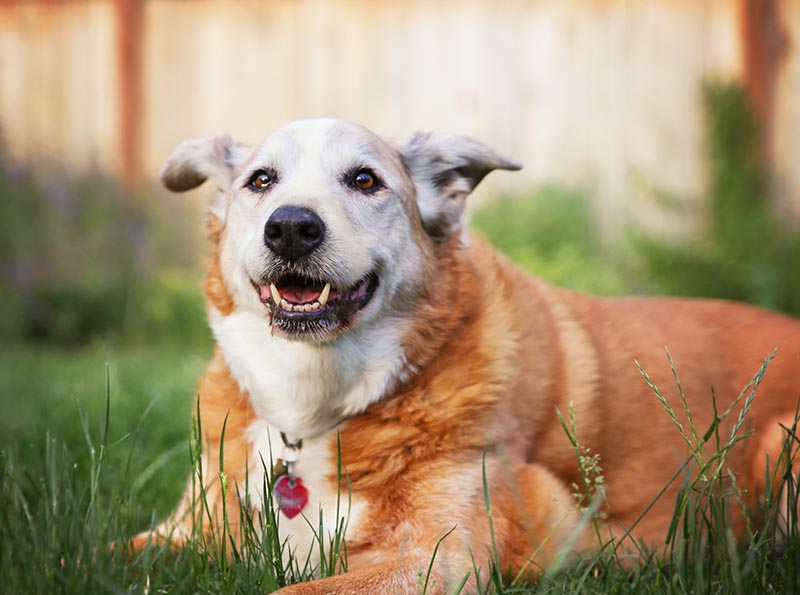
2. They Are Bored
Dogs get bored, just as people do. This can occur if your dog is not mentally stimulated. You can remedy this boredom by adding some spice to your walk. Take a different route, meet new people, and let your pup meet new dogs while you control them with a leash.
You can also take a friend’s dog with you on your walks or take your canine to a local dog park and let them get their exercise while playing with new friends. Who knows, you might meet some new friends as well.
3. The Dog Needs a Break
If you grow tired during your walks, you can safely assume that your dog also does. Your dog may be sitting down because they’re tired and need a break. A break may be necessary if you’re taking your dog on a longer walk than usual or if the weather is excessively hot or humid.
For example, if your dog has become a couch potato, you don’t want their first walk in a while to be a 5-mile-long one. Start slowly, and let your dog take breaks as needed.
It’s also important to consider the weather you’re walking in. A dog will walk much faster in the spring and fall than during the humid summer months. You probably have a hard time walking for longer distances during the summer, so assume your canine pal does, too.
During the summer, keep your dog in the shade during walks as much as possible, and take multiple breaks. If your dog sits down anyway, maybe it’s just too humid or hot, and you need to head back home and try again another day.
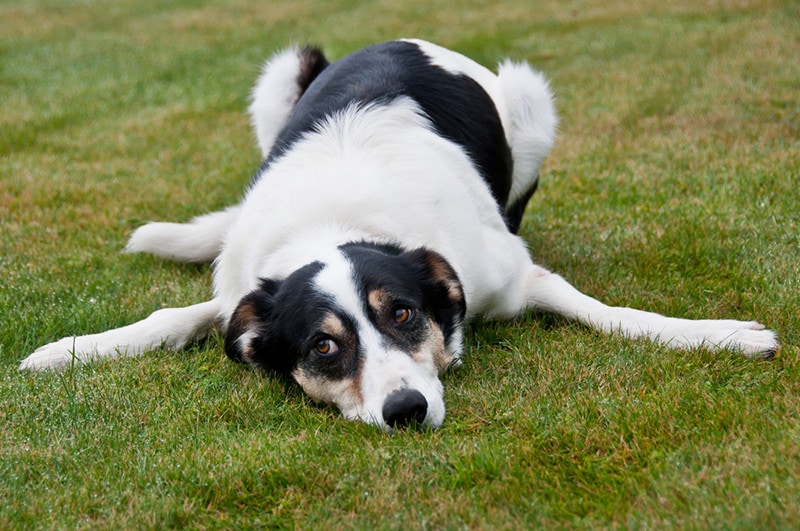
4. The Dog Is Sick
It is a possibility that your dog is suffering from an illness or is in pain. If the dog abruptly sits down during your walks, they may have suffered a cut to their paw or something else. Examine your dog’s feet and legs for cuts, scrapes, or blisters.
If there are no apparent signs of trauma, it could be that your pet is sick. Some conditions that will cause a dog to plant themselves abruptly during a walk are listed below.
- A strain or a sprain
- Anemia
- Fever
- Nausea
- Abdominal pain
- Spinal damage
- Certain cancers
If you believe your dog is in pain or see any signs of the conditions above, it’s best to make an appointment with your vet immediately for treatment options.
If you’re concerned about your dogs health, we recommend you speak with a vet.
If you need to speak with a vet but can't get to one, head over to PangoVet. It's an online service where you can talk to a vet online and get the personalized advice you need for your pet — all at an affordable price!

5. They Are Afraid
Your dog could sense something you haven’t felt or heard yet. It could be a firetruck with sirens blaring coming down the street or an approaching thunderstorm. Other reasons for your dog’s fear could be fireworks, other dogs, or even bicycles passing by if your dog isn’t used to seeing them.
Also, if your dog isn’t used to being taken out for walks on a leash, it could cause the dog to become scared and anxious. The dog might sit down because it’s frozen from fear or refuses to go further in a strange environment.
Give your pup time to get used to the leash and a new area by shortening your walks and taking the dog out a little at a time. Be careful that your dog doesn’t try to bolt when scared, as this could lead to the dog becoming injured or worse.

6. The Dog Is Distracted
There are all kinds of things to see and explore on a walk. If the dog sees another person, smells something new, sees a squirrel it wants to chase, or another dog it wants to socialize with, the dog can become distracted. Often, the dog finds something on the ground to sniff or eat and plants itself until it’s done.
You can lure your dog back by offering a treat so that you can continue your walk. However, using this method sparingly is best, as you don’t want your pet to associate walking with a treat. You’ll end up with a dog that plants its butt constantly, expecting you to give it a treat to get it going again. This is not the behavior you want to encourage in your furry friend.

Conclusion
Dogs love to go on walks, so if your dog is suddenly planting their bottom and refusing to move on during your walks, you’re probably concerned. While nine times out of ten, there’s nothing to worry about; there is the chance that your dog is ill or injured. If you feel your dog is sick due to this behavior, it’s best to schedule an appointment with your vet for diagnosis and treatment.
If the vet has cleared your dog for health issues, you can do a few things to entice them to walk with you, including tempting them to move with a treat or distracting them with a toy.
Featured Image Credit: YouraPechkin, Shutterstock

